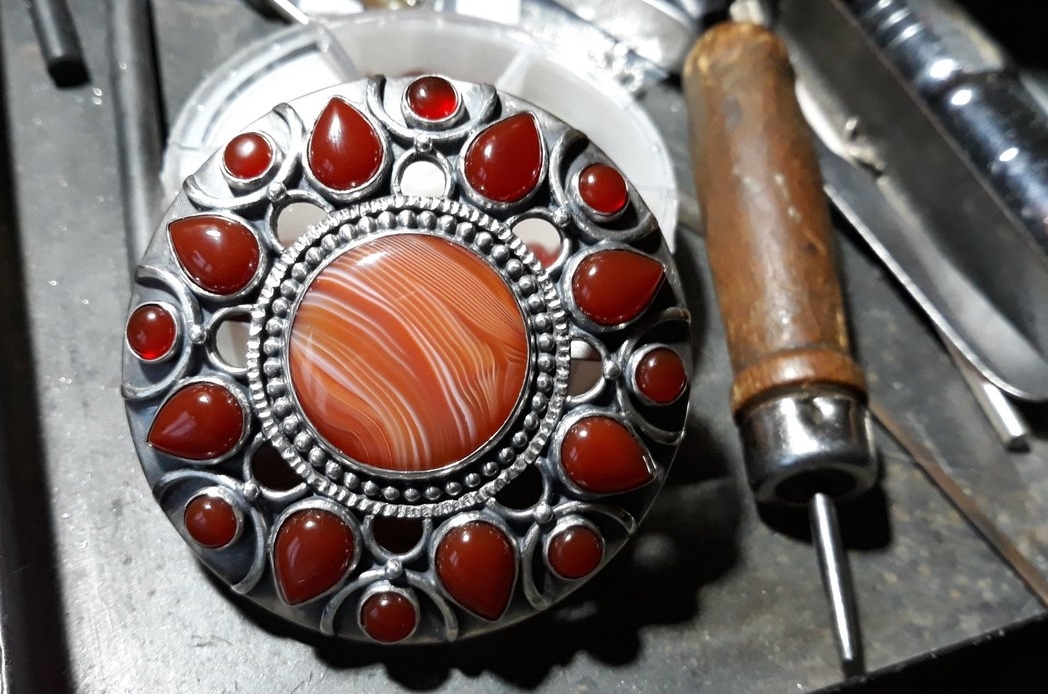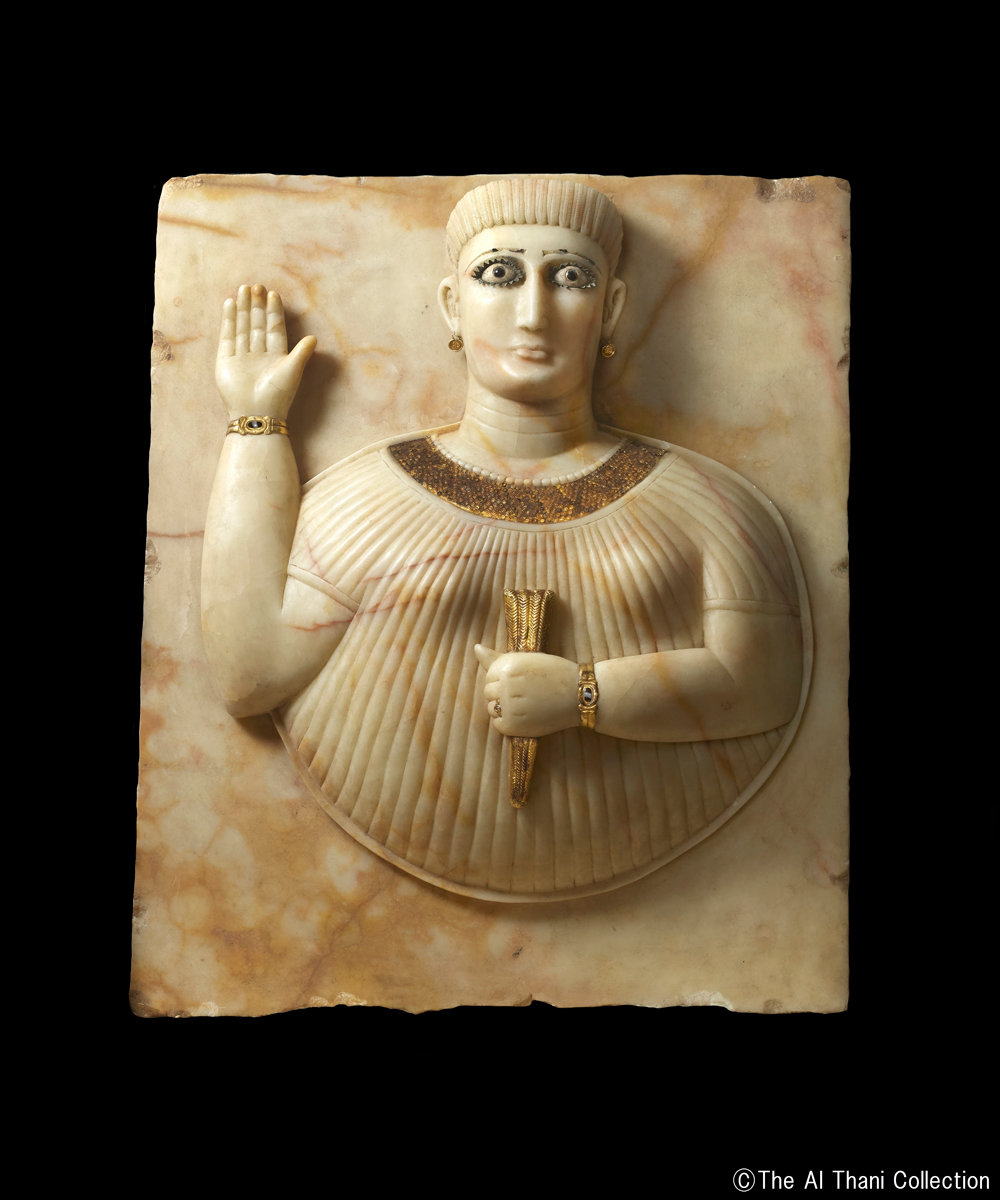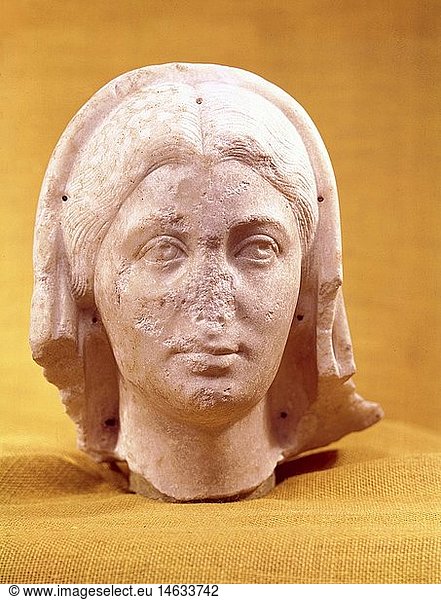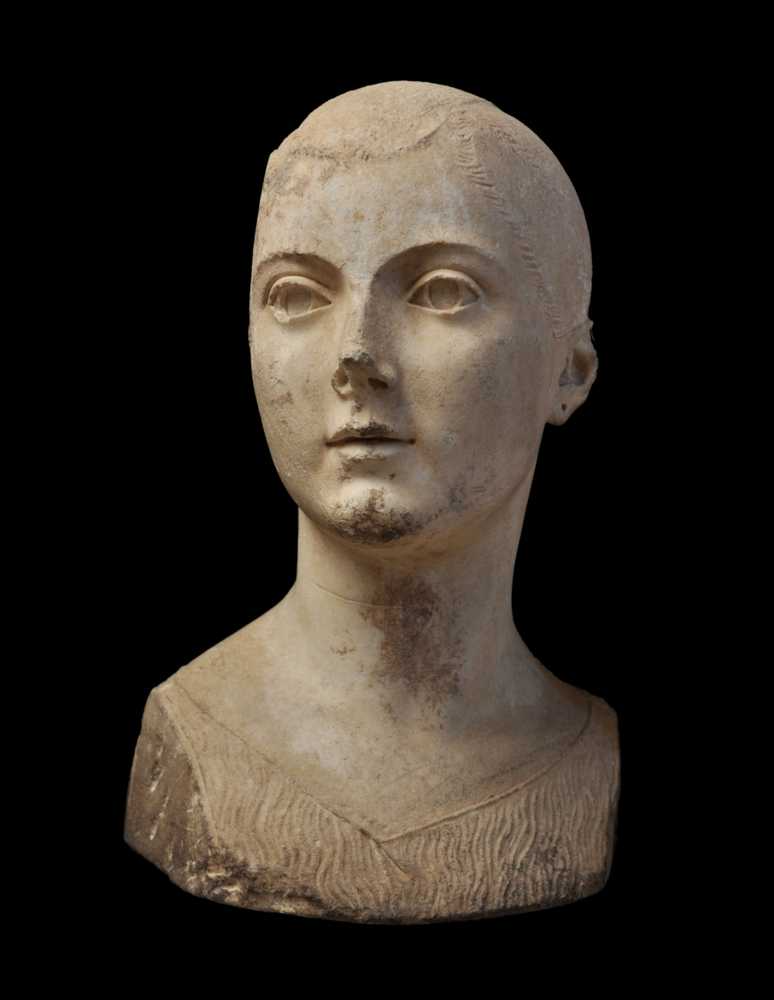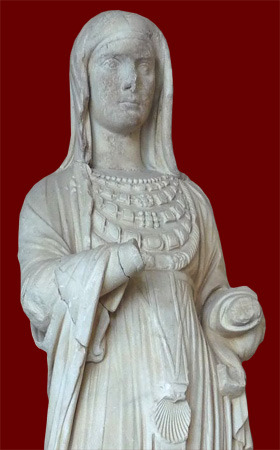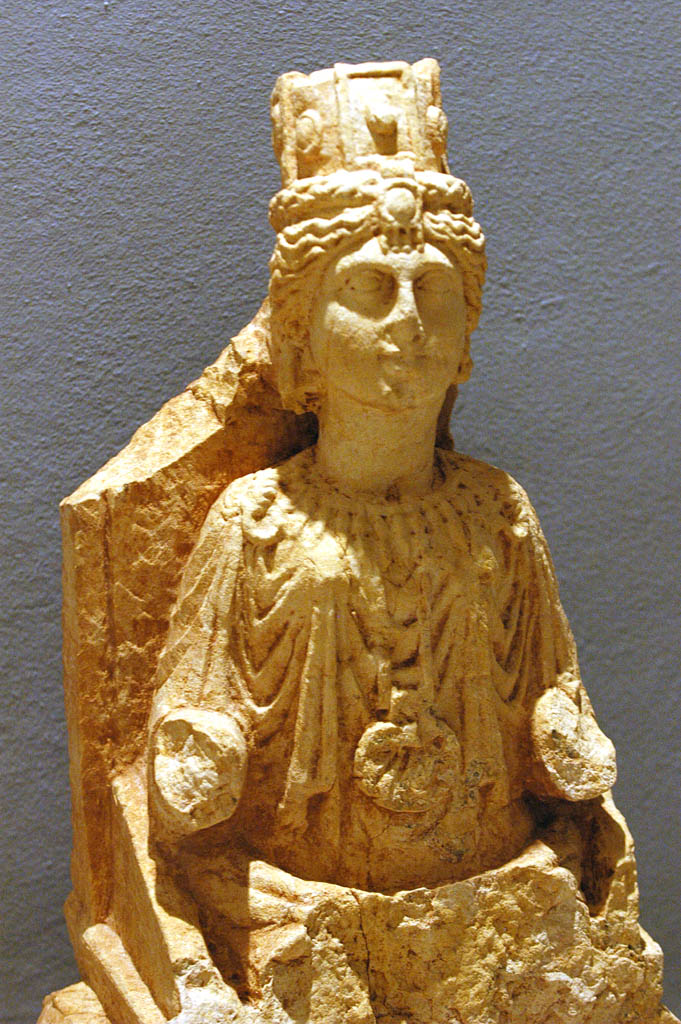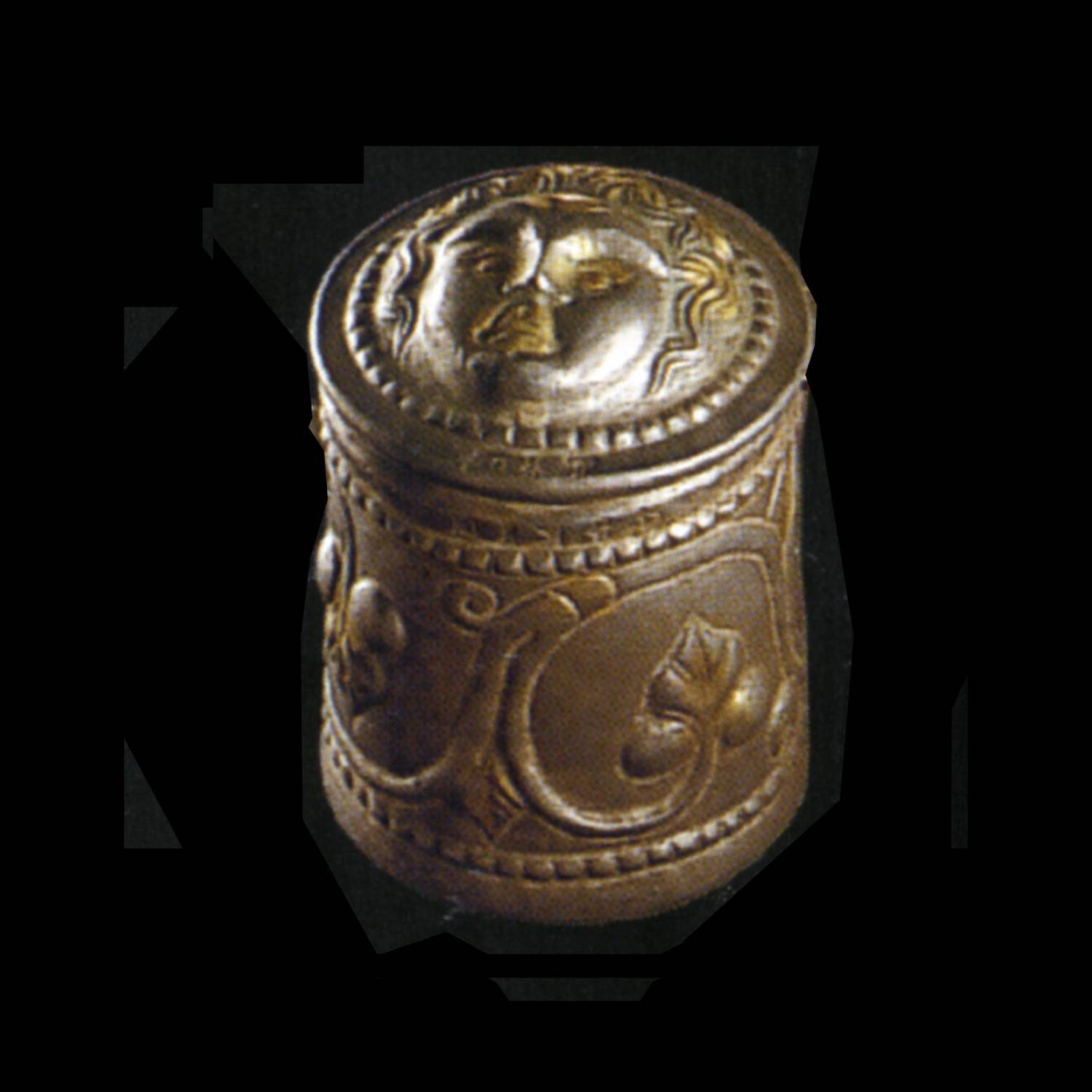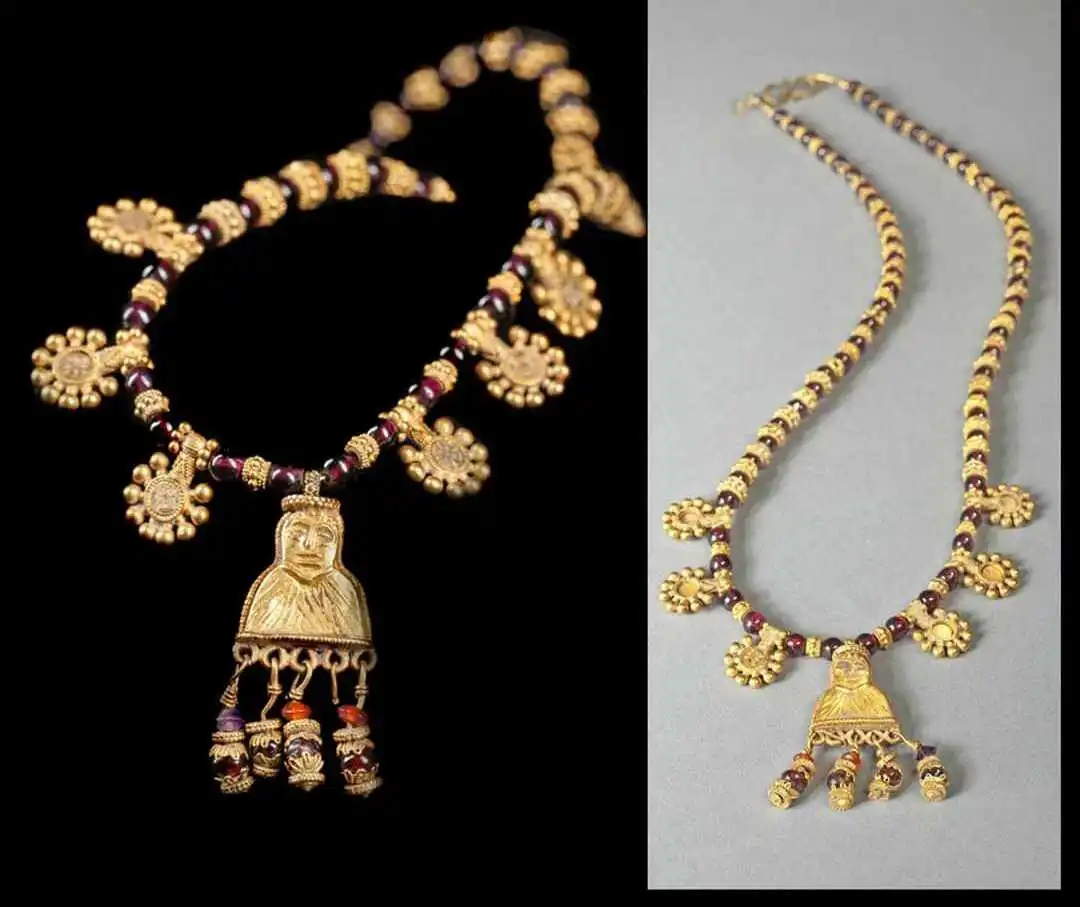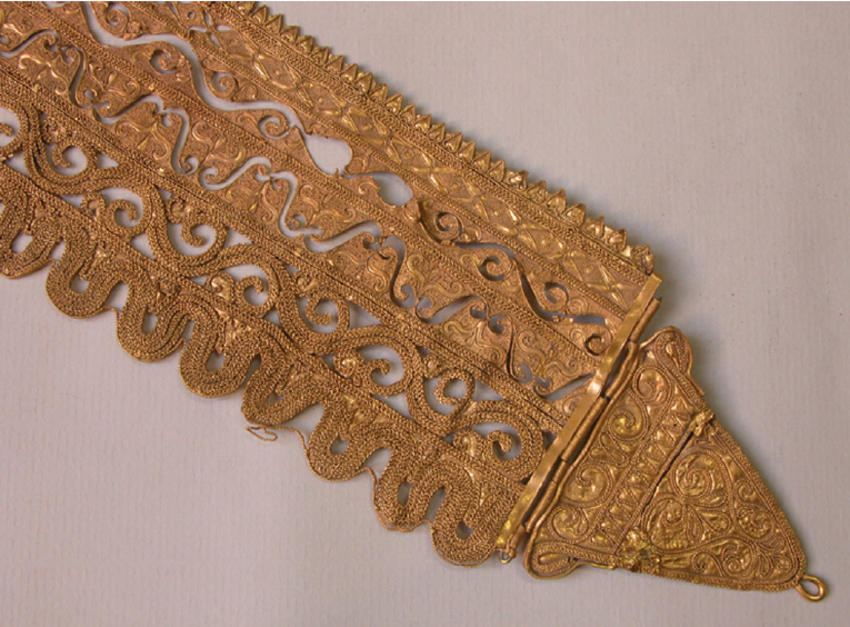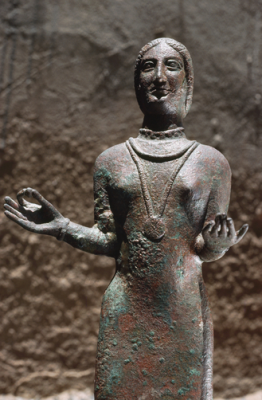
“Bronze statue of a female worshipper in the act of burning a pinch of frankincense. The woman wears necklaces and a round pendant with rays, probably an amulet” (National Museum of Yemen, Ṣanʿāʾ, inv. no. YM 289)
The South Arabian woman, Antonini & Robin
https://www.academia.edu
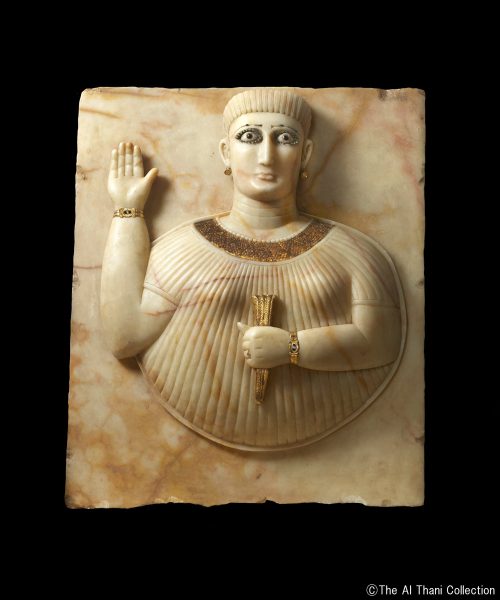
©Al Thani Collection 2018
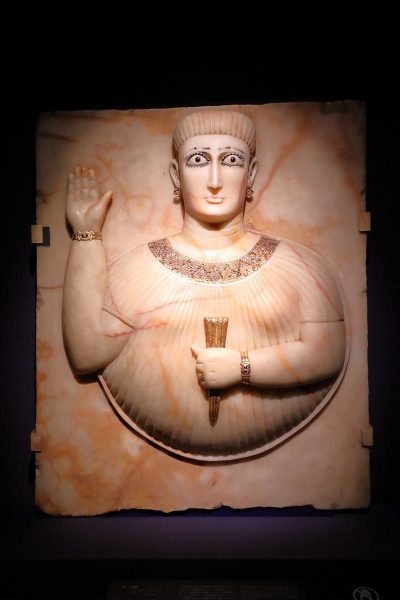
Qataban, South Arabia, ca.100 CE.
Photo 1 ©Al Thani Collection 2018
“Funerary stele. Cat. 10. South Arabia. 100 BC – 100 AD Alabaster, gold, banded agate, metal. H. 108 cm; L. 91 cm; D. 24 cm.
The exhibition catalog offers a comparison of this funerary stele with one of very similar construction in the British Museum in London. We notice that the London stele is devoid of its jewelry set.” Royal treasures from the Al Thani collection at Fontainebleau
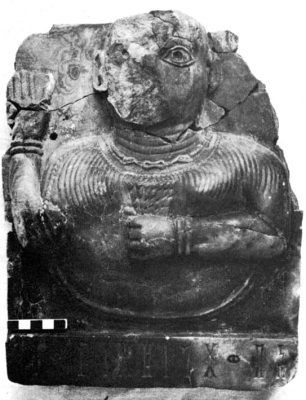
Alabaster stela in high relief representing a female bust with her right hand raised and her left one holding a sheaf of wheat. The woman wears a pleated tunic, an elaborate necklace and bracelets on each wrist. Neck with multiple necklines. Either the tunic or the necklace.
Christian Julien Robin, Le wādī Ḍuraʾ (Yémen) pendant l’Antiquité: une histoire tourmentée, révélée par les inscriptions https://journals.openedition.org/syria/12509
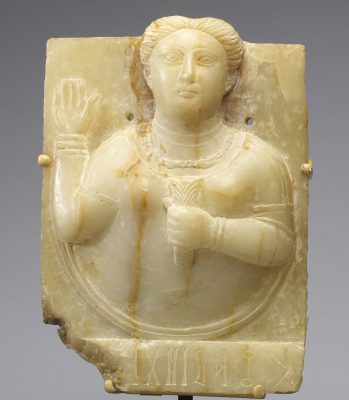
South Arabia,1st C BCE – 1st C CE; alabaster
“Rising from a roundel, a woman raises her right hand with the palm open toward the viewer. Her left hand holds a stylized bundle of wheat. She represents a priestess, who intercedes with the sun goddess on behalf of the donor. The donor’s name, Rathadum, is written below the roundel.”
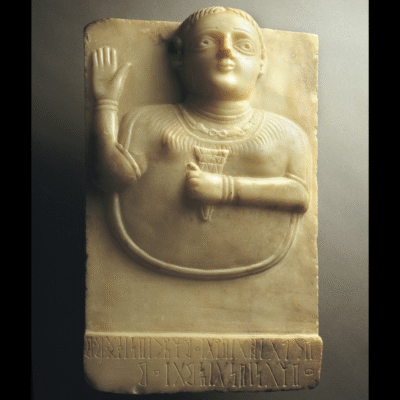
The Jubah, 1st century BCE
National Museum, Sanaa
https://asia.si.edu
The animal-head terminals of the bracelets, necklaces and earrings were first developed in Achaemenid art and became popular in Greece during the 5th century BCE.
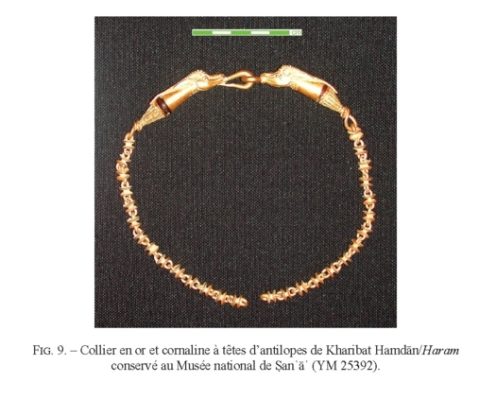
https://www.persee.fr
To compare

Attributed to the Taranto workshop, dated to the late second century BCE.
Source:
Catalog of the Altamura Museum
https://www.uomodialtamura.it/public/AllegatiSezioni/Paleolitico/Catalogo_Museo_Altamura.pdf
- Gioielli sudarabici da Kharibat Hamdān/ Haram (Jawf, Yemen): osservazioni preliminari, Sabina Antonini de Maigret, Fabio Betti, Leila ‘Alī ‘Aqīl https://doi.org/10.1484/J.SEC.5.112737
